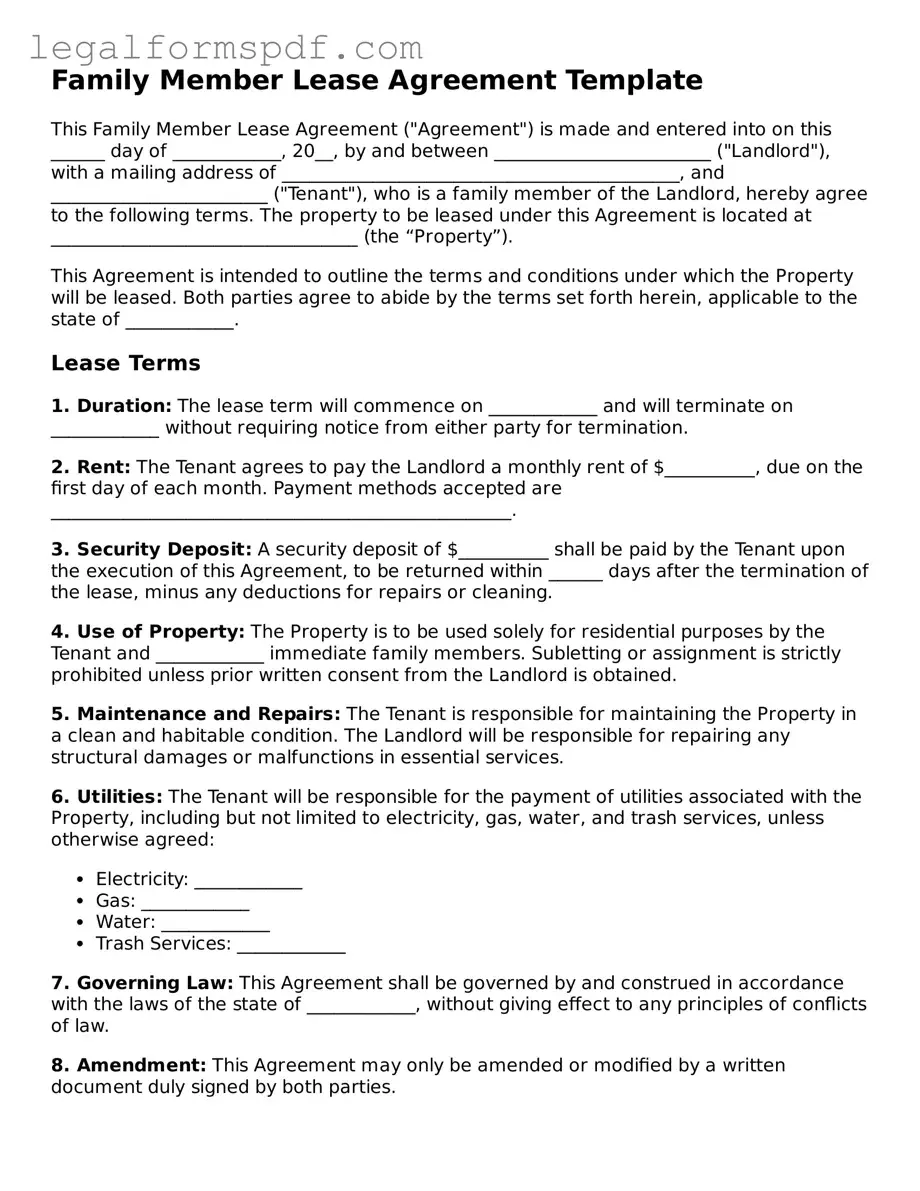Family Member Lease Agreement Template
This Family Member Lease Agreement ("Agreement") is made and entered into on this ______ day of ____________, 20__, by and between ________________________ ("Landlord"), with a mailing address of ____________________________________________, and ________________________ ("Tenant"), who is a family member of the Landlord, hereby agree to the following terms. The property to be leased under this Agreement is located at __________________________________ (the “Property”).
This Agreement is intended to outline the terms and conditions under which the Property will be leased. Both parties agree to abide by the terms set forth herein, applicable to the state of ____________.
Lease Terms
1. Duration: The lease term will commence on ____________ and will terminate on ____________ without requiring notice from either party for termination.
2. Rent: The Tenant agrees to pay the Landlord a monthly rent of $__________, due on the first day of each month. Payment methods accepted are ___________________________________________________.
3. Security Deposit: A security deposit of $__________ shall be paid by the Tenant upon the execution of this Agreement, to be returned within ______ days after the termination of the lease, minus any deductions for repairs or cleaning.
4. Use of Property: The Property is to be used solely for residential purposes by the Tenant and ____________ immediate family members. Subletting or assignment is strictly prohibited unless prior written consent from the Landlord is obtained.
5. Maintenance and Repairs: The Tenant is responsible for maintaining the Property in a clean and habitable condition. The Landlord will be responsible for repairing any structural damages or malfunctions in essential services.
6. Utilities: The Tenant will be responsible for the payment of utilities associated with the Property, including but not limited to electricity, gas, water, and trash services, unless otherwise agreed:
- Electricity: ____________
- Gas: ____________
- Water: ____________
- Trash Services: ____________
7. Governing Law: This Agreement shall be governed by and construed in accordance with the laws of the state of ____________, without giving effect to any principles of conflicts of law.
8. Amendment: This Agreement may only be amended or modified by a written document duly signed by both parties.
9. Entire Agreement: This document and any attached exhibits constitute the entire agreement between the parties related to the subject matter hereof and supersedes all prior agreements, understandings, negotiations, and discussions, whether oral or written.
Signatures
By signing below, both the Landlord and Tenant agree to the terms and conditions outlined in this Family Member Lease Agreement.
Landlord Signature: __________________________ Date: ____________
Tenant Signature: __________________________ Date: ____________
